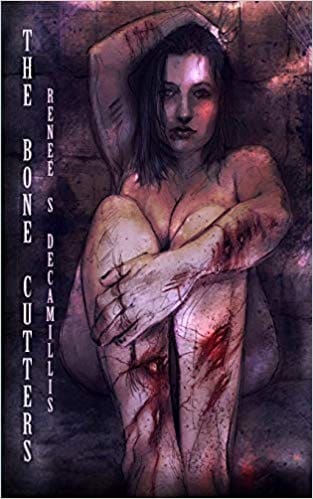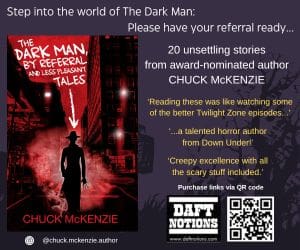Epeolatry Book Review: The Bone Cutters

Disclosure:
Our reviews may contain affiliate links. If you purchase something through the links in this article we may receive a small commission or referral fee. This happens without any additional cost to you.

Title: The Bone Cutters
Author: Renee S. DeCamillis
Genre: Horror
Publisher: Eraserhead Press
Release Date: 1st September, 2019
Synopsis: Dory wakes up in the padded room of a psychiatric hospital with no recollection of how she wound up there. She soon finds out she’s been Blued-Papered—involuntarily committed. When she is sent to the wrong counseling group, she discovers a whole new world of drug addicts she’d never known existed. When she learns that those grotesque scars they all have are from cutting into their own bodies, it makes her skin itch. Why do they do it?—They get high off bone dust. They carve down to the bone, then chisel and scrape until they get that free drug. When they realize Dory’s never been “dusted”, she becomes their target. After all, dust from a “Freshie” is the most intense high, and pain free—for the carver.
By the end of that first meeting Dory is running scared, afraid of being “dusted”, though the psych. hospital staff doesn’t believe a word she says. She’s delusional—at least that’s what they tell her. They end up sending her to that same counseling group every day, though Dory knows that all those junkie cutters want is what’s inside of her, and they won’t give up until they get what they’re after.
Like Girl Interrupted and “The Yellow Wallpaper”, The Bone Cutters is one woman’s dark and surreal experience with a madness that is not necessarily her own.
The Bone Cutters opens with an original concept: bone fragments used as drugs and junkies willing to steal for the high. The novella is more psychological/Grand Gogol than body horror/Croenbergian. Its action takes place in a mental asylum instead of the world at large; this smaller scale allows for an unreliable narrator, but it denies the horror of universal chaos.
The protangionist, Dory “Dabbler”, is introduced to the “Dusters/Junkie Cutters” in group counseling. She’s placed there due to a suicide attempt and bringing harm to others. There she meets the “Dusters” or as she calls them “Junkie Cutters”:
“A skeletal-thin man speaks with passion of an insatiable hunger. His voice sounds strained, scraping and clawing its way out of his mouth, stumbling past his dry cracked lips. His eyes scream pain, empty and hollow, drained of what may have been behind those doors before.
With every syllable he utters, I can’t stop staring at his neck. With every bob of his Adam’s apple, I’m fascinated, mesmerized. With every bob of his Adams’ apple it slithers around the base of his neck.
The scar.
The size of a mutant slug—fast and glistening—with a thickness frive times my thumb’s width.”
The rest of the Junkie Cutters are similarly scarred. It reminds of before and after pics of meth addicts—their pain, misery, and addiction worn plainly on the outside. Dory is “scarred” as well; she scratches constantly at her head as if to open her skull and release the pain therein. It certainly fascinates the Junkie Cutters. That, and the fact that she’s a “freshie”, essentially a virgin to dust. If drawing a line towards drug addiction, addiction effects more than the addict.
DeCamillis is a musician, and it shows. There are several allusions to music and musicians. One might be Tommy, Dory’s friend; he reminds me of Tommy Lee from Motley Crue. Another allusion is made to One Flew Over the Cuckoo’s Nest; the mental asylum and a “Nurse Hatchet” cause most of the problems.
Throughout the novella, characters are given nicknames or aliases. I must wonder if DeCamillis is suggesting a mirroring effect—what is seen one way is perceived in another. For example, “Dusters” are also “Junkie Cutters.” One thinks of bone or flesh depending on the name.
DeCamillis draws in the reader with an easy-going, open-faced writing style. She keeps the reader there with quick pacing. She means for you to read the novella in one sitting. Her concept of horrific addiction and ruin is creative and timely. Her narrator, Dory, is likeable if unreliable. However, her other characters are not drawn as well. The two self-harming Dusters come in at the tail end of the novella, proving to be friends. In my opinion, the story would have been fuller if these characters had been realized earlier in the novella.
There are also problems with the suspension of disbelief. Dory spends a lot of time in a padded cell for no obvious reason. She also makes a habit of hiding, with the only real search for her at the end of the novella.
This novella’s prose is trippy and hypnotic. It’s a fun ride, but I would have preferred her to go freaking wild and release an inner bloodbath. (Though the psychological approach is effective.) There is a lot of potential here, but DeCamillis doesn’t quite rise to it. DeCamillis is holding back and for that, I give her 3 stars.
- About the Author
- Latest Posts
Kai Miro worked at a library for eight years, and was an English 101 Teacher at both the college and the high school levels. Kai’s work has appeared within “The Big Book of Bizarro”, “Night Gypsy: Journeys into Darkness”, and “Re-Enchant Anthology”.











